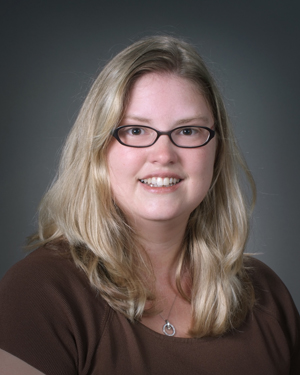Dr. Christie Sayes Receives DuPont Young Professor Grant
COLLEGE STATION, TX – Dr. Christie Sayes, assistant professor in the Department of Veterinary Physiology and Pharmacology at the Texas A&M College of Veterinary Medicine & Biomedical Sciences (CVM), earned a prestigious 2010 DuPont Young Professor award and grant.

Sayes is a nanoscientist who does most of her research in her Nanomaterials and Nanotoxicology lab at the CVM. She also has a joint appointment with the College of Engineering at Texas A&M University through the Department of Biomedical Engineering and the Health Sciences Center through the Department of Environmental Genomic Medicine.
“I feel elated and honored that the company recognizes my research program. There is research going on in toxicology at A&M that is outside of the traditional engineering fields but can be applied to the industry, especially in the chemical industry,” explains Sayes. “It is almost a sense of relief that my research is appreciated by not just what is going on in the university, but also by the DuPont Company. This award and funding will allow me to continue conducting my environmental health and safety research.”
The DuPont Young Professor Program gives financial assistance for three years to promising young faculty who do research in areas that will benefit the long-term success of DuPont and its industries. The company’s top scientists, DuPont Fellows Forum, choose the winners every year. The candidate cannot be a tenured faculty member, but they do have to be a on a tenure-track.
Sayes will use the grant money to further develop research on her focus: discovering what the biological and environmental effects are of mass producing nanomaterials. One example is zinc oxide, its properties and applications, and what effect an engineered material like this can have on a consumer over a short and long term use.
Last year, 2009, was the first year that DuPont did not give out the grants due to economic conditions. Therefore, a record number of candidates applied this year. Only 12 grants were given worldwide, six in North America.
“The recognition from the award is great, but the grant money that comes into my lab from it is an additional validation that what I am doing is important,” said Sayes.


